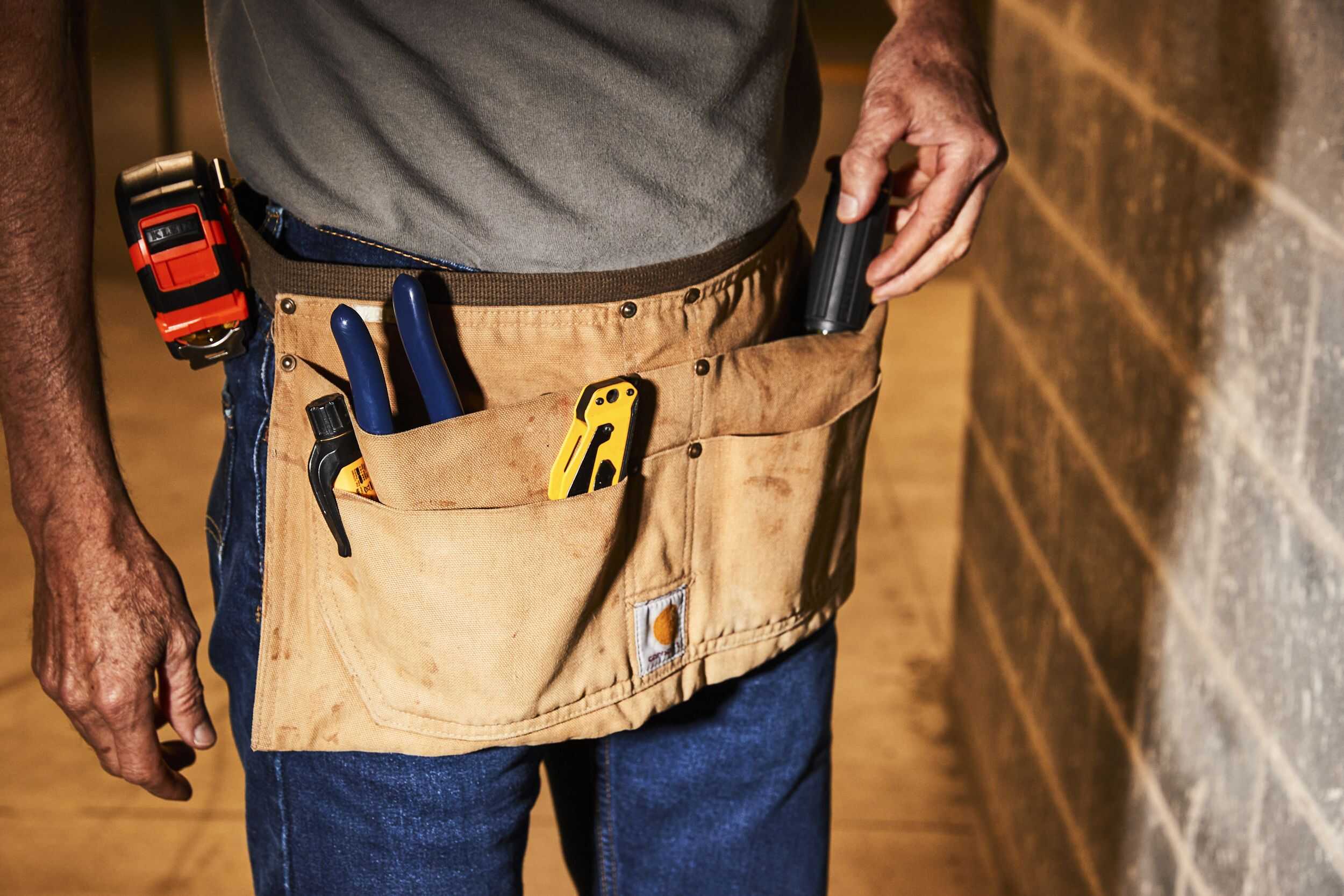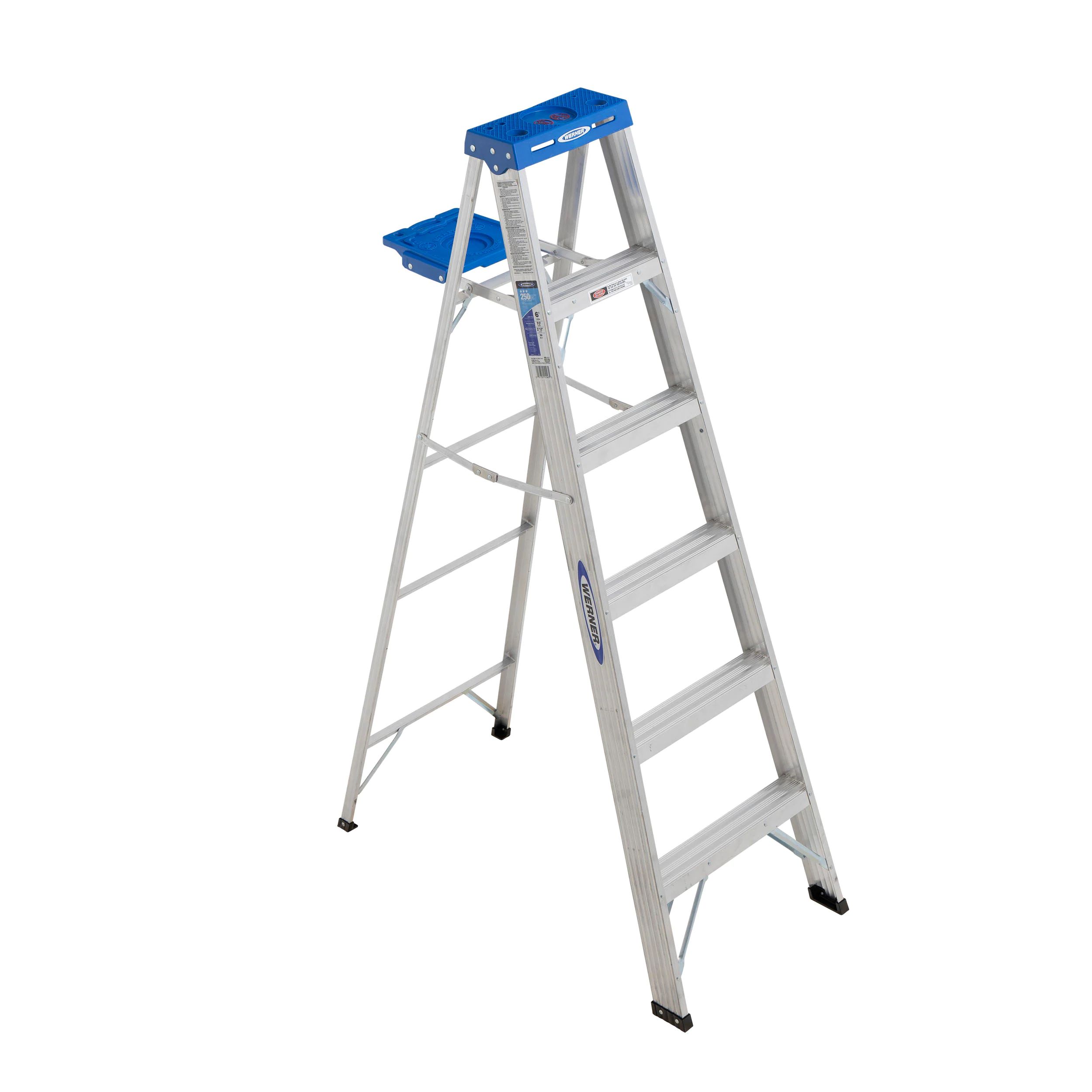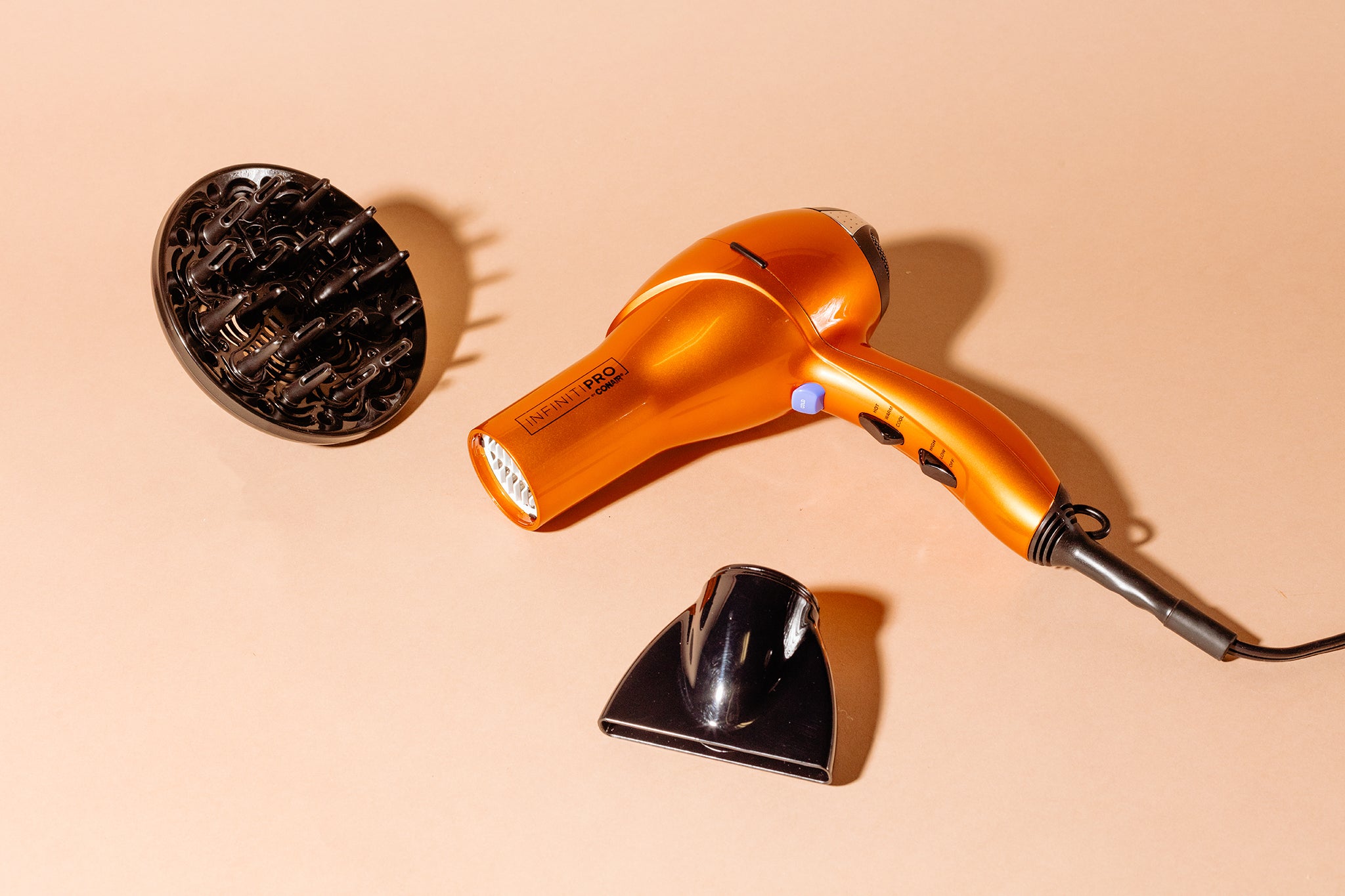

Articles
How Much Does A Carpenters Tool Belt Weigh
Modified: August 31, 2024
Discover the weight of a carpenter's tool belt in this informative article. Gain insights into the various factors affecting the weight and find helpful tips for choosing the right tool belt for your needs.
(Many of the links in this article redirect to a specific reviewed product. Your purchase of these products through affiliate links helps to generate commission for Storables.com, at no extra cost. Learn more)
Introduction
As a carpenter, having the right tools at your fingertips is crucial for a successful and efficient workflow. One of the essential accessories for any carpenter is a tool belt, which serves as a mobile storage solution for carrying and organizing various tools and equipment. However, not all tool belts are created equal when it comes to weight.
The weight of a carpenter’s tool belt can impact their comfort, mobility, and overall performance on the job. Whether you’re a professional carpenter or a DIY enthusiast, understanding how much a carpenter’s tool belt weighs and how it can affect your work can help you make an informed decision when choosing the right tool belt for your needs.
In this article, we will explore the importance of a tool belt for carpenters, the factors that can affect its weight, the average weight of a carpenter’s tool belt, and some lightweight and heavy-duty options available in the market. We will also provide some helpful tips to assist you in choosing the right tool belt weight that suits your requirements.
So, let’s delve into the world of carpenter’s tool belts and discover how their weight can impact your performance on the job!
Key Takeaways:
- The weight of a carpenter’s tool belt can impact their comfort, mobility, and overall performance on the job, making it crucial to choose a tool belt that balances durability, functionality, and weight load.
- Lightweight tool belt options such as nylon, polyester, and canvas offer mobility and convenience, while heavy-duty options like leather, reinforced material, and metal provide robust support for heavy tools, ensuring carpenters can work efficiently and comfortably.
Read more: How Much Does A Tool Box Weigh
Importance of a Tool Belt for Carpenters
A tool belt is an indispensable accessory for carpenters who work with a wide range of tools and equipment. It offers several advantages that contribute to the efficiency, productivity, and safety of carpentry tasks. Let’s explore the importance of a tool belt for carpenters:
- Organized Storage: Carpenters often have a multitude of tools and accessories that they need to carry around on the job site. A tool belt provides convenient storage compartments and pockets, allowing carpenters to keep their tools organized and easily accessible. This eliminates the need for constantly searching through toolboxes or bags, saving valuable time and effort.
- Increased Efficiency: With a tool belt, carpenters can have their essential tools within arm’s reach, eliminating the need to repeatedly walk back and forth to retrieve tools from a centralized location. This streamlines the workflow and allows carpenters to focus more on the task at hand, increasing overall efficiency.
- Better Mobility: Carrying around a tool belt frees up the carpenter’s hands, enabling them to move around the job site more easily and safely. This enhanced mobility is especially beneficial when working on ladders, scaffolding, or in tight spaces where carrying a toolbox or bag would be impractical or hazardous.
- Improved Safety: By having tools securely fastened in a tool belt, carpenters reduce the risk of accidental falls or injuries caused by dropping tools. With tools readily accessible, carpenters can work with greater focus and less distraction, minimizing the chances of accidents or mishaps.
- Professional Image: Wearing a tool belt not only provides practical benefits but also presents a professional image. It showcases a carpenter’s expertise, preparedness, and attention to detail. Clients and colleagues alike perceive carpenters with tool belts as organized and serious professionals, which can lead to more opportunities and a positive reputation.
In summary, a tool belt is essential for carpenters as it provides organized storage, increases efficiency, improves mobility and safety, and enhances the professional image of the carpenter. Investing in a high-quality tool belt is a wise choice that can significantly impact productivity and the overall success of carpentry projects.
Factors that Affect the Weight of a Carpenter’s Tool Belt
The weight of a carpenter’s tool belt can vary significantly based on several factors. Understanding these factors can help carpenters choose a tool belt that suits their specific needs and preferences. Let’s explore the key factors that can affect the weight of a carpenter’s tool belt:
- Material: The type of material used to make the tool belt can have a significant impact on its weight. Common materials include leather, nylon, polyester, and canvas. Leather tool belts tend to be heavier but offer durability and a classic look. On the other hand, nylon, polyester, and canvas tool belts are typically lighter but may sacrifice some durability.
- Number and Size of Pockets and Compartments: The design and layout of the tool belt, including the number and size of the pockets and compartments, can affect its weight. Tool belts with more pockets and compartments provide increased storage capacity but may add to the overall weight due to the additional material and stitching required.
- Tool Selection: The types and sizes of tools that a carpenter carries in their tool belt can also impact its weight. Carrying heavy or bulky tools such as hammers, wrenches, or power tools can increase the overall weight of the tool belt. Choosing lightweight or compact tools can help minimize the weight load.
- Belt Straps and Buckles: The design and construction of the belt straps and buckles play a role in the overall weight of the tool belt. Some belts may have thicker or wider straps, heavier buckles, or additional padding for comfort. These features can increase the weight of the tool belt but offer added support and durability.
- Additional Accessories: Some tool belts may come with additional accessories such as suspenders, hammer holsters, or tool holders. While these accessories can provide convenience, they can also contribute to the overall weight of the tool belt.
- Personal Preference: Finally, the weight of a tool belt can also be subjective and based on the individual preferences of the carpenter. Some carpenters may prioritize durability and are willing to carry a slightly heavier tool belt, while others may prefer a lighter and more comfortable option, even if it means sacrificing some storage capacity.
It’s important for carpenters to consider these factors and find the right balance between functionality, comfort, and weight when selecting a tool belt. By assessing their specific needs and considering these factors, carpenters can make an informed decision and choose a tool belt that maximizes their productivity and comfort on the job.
Average Weight of a Carpenter’s Tool Belt
The average weight of a carpenter’s tool belt can vary depending on the factors mentioned earlier, such as the material, design, and tool selection. However, it is helpful to have a general idea of the weight range that carpenters commonly encounter when choosing a tool belt for their work. Let’s explore the average weight of a carpenter’s tool belt:
On the lighter end of the spectrum, some lightweight tool belts made from nylon, polyester, or canvas materials may weigh around 1 to 3 pounds (0.45 to 1.36 kilograms). These tool belts are designed to provide essential storage for a few select tools while minimizing the overall weight load on the carpenter.
Mid-weight tool belts, commonly made from a combination of leather and fabric materials, typically range between 3 to 5 pounds (1.36 to 2.27 kilograms). These tool belts offer a balance between durability and weight, providing ample storage with multiple pockets and compartments for an extended range of tools and accessories.
On the heavier end of the spectrum, heavy-duty tool belts constructed from thick or reinforced leather materials can weigh around 5 to 10 pounds (2.27 to 4.54 kilograms) or even more. These tool belts are designed for professional carpenters who require maximum durability and storage capacity to carry a wide range of heavy tools and equipment.
It is important to note that these weight ranges are approximate and can vary depending on the specific brand, model, and additional features of the tool belt. It is always recommended to check the product specifications or consult with the manufacturer to determine the exact weight of a particular tool belt.
Additionally, it’s worth considering the weight distribution on the tool belt. Some carpenters prefer a tool belt with an evenly balanced weight distribution, while others may opt for a design that allows for heavier tools to be positioned closer to the hips for better stability and comfort.
In summary, the average weight of a carpenter’s tool belt can range from 1 to 10 pounds (0.45 to 4.54 kilograms) depending on factors such as material, design, and the number of tools being carried. Understanding the weight range can help carpenters select a tool belt that aligns with their comfort, storage needs, and overall job requirements.
When choosing a carpenter’s tool belt, consider the materials it’s made of. Leather tool belts tend to be heavier than nylon ones, so if weight is a concern, opt for a lighter material.
Lightweight Tool Belt Options for Carpenters
For carpenters who prefer a lighter tool belt that offers mobility, comfort, and efficiency, there are several lightweight options available in the market. These tool belts are designed to reduce the overall weight load while still providing sufficient storage for essential tools. Let’s explore some lightweight tool belt options for carpenters:
- Nylon Tool Belts: Nylon tool belts are lightweight and offer excellent durability. They usually feature multiple pockets and compartments for organizing various tools and accessories. Nylon tool belts are also resistant to moisture and can withstand harsh job site conditions.
- Polyester Tool Belts: Polyester tool belts are another lightweight and durable option for carpenters. They are known for their resistance to abrasion and tearing. Polyester tool belts often have reinforced stitching for added strength and longevity.
- Canvas Tool Belts: Canvas tool belts are made from heavy-duty canvas fabric, which provides a balance between durability and weight. They are lightweight, breathable, and can comfortably carry essential tools. Canvas tool belts often have adjustable straps for a secure and customizable fit.
- Tool Aprons: Tool aprons are a lightweight alternative to traditional tool belts. They feature a wrap-around design with multiple pockets and straps to secure tools. Tool aprons are typically made from lightweight materials like canvas or nylon, offering portability and freedom of movement while keeping tools at hand.
- Modular Tool Belts: Modular tool belts consist of separate pouches or attachments that can be customized and worn as separate pieces or collectively as a belt. This design allows carpenters to distribute the weight of tools evenly, reducing strain and increasing comfort. They are available in lightweight materials like nylon or polyester.
When choosing a lightweight tool belt, consider factors such as the number of pockets and compartments needed, the type of tools to be carried, and the overall comfort and adjustability of the belt. It’s important to find a tool belt that fits securely and distributes the weight evenly to prevent strain or discomfort during long hours of work.
It’s also worth noting that while lightweight tool belts offer increased mobility and comfort, they may not provide as much storage capacity as heavier-duty options. Carpenters should assess their specific tool requirements and opt for lightweight tool belts that can accommodate their essential tools and accessories.
Ultimately, lightweight tool belts offer a practical solution for carpenters seeking a balance between mobility and functionality. These options allow carpenters to carry their tools comfortably while maintaining productivity and reducing strain on the job.
Read more: What Goes In A Carpenter Tool Belt
Heavy-duty Tool Belt Options for Carpenters
For carpenters who require maximum durability and storage capacity to carry a wide range of heavy tools and equipment, heavy-duty tool belts are the ideal solution. These tool belts are designed to withstand rigorous use and provide ample space for various tools, accessories, and fasteners. Let’s explore some heavy-duty tool belt options for carpenters:
- Leather Tool Belts: Leather tool belts are renowned for their durability and timeless appearance. They are constructed from high-quality leather, which offers excellent strength and resistance to wear and tear. Leather tool belts often feature multiple pockets and hammer loops, providing ample storage for tools of various sizes.
- Reinforced Material Belts: Some heavy-duty tool belts are made from reinforced materials such as ballistic nylon or heavy-duty polyester. These belts have reinforced stitching and additional layers of fabric or padding to provide enhanced durability and support for carrying heavy tools.
- Padded Tool Belts: Padded tool belts are designed to provide extra comfort and reduce strain when carrying heavier loads. These belts feature padded lumbar supports and thick padding on the waistband and shoulder straps, distributing the weight more evenly and reducing pressure on the carpenter’s body.
- Metal Tool Belts: Metal tool belts, often made from durable steel or aluminum, are heavy-duty options for carpenters who handle heavy tools and require exceptional strength and stability. Metal tool belts are resistant to bending or warping under heavy loads and provide a secure and long-lasting solution.
- Suspenders for Tool Belts: While not a tool belt itself, suspenders can be combined with heavy-duty tool belts to provide additional support and weight distribution. Suspenders help alleviate strain on the lower back and hips by transferring some of the weight of the tool belt to the shoulders.
When selecting a heavy-duty tool belt, consider factors such as the capacity to carry bulky tools, the number and arrangement of pockets and loops, and the overall durability and quality of the belt. A secure and comfortable fit is crucial to prevent the tool belt from sagging or shifting during work.
Heavy-duty tool belts are an investment for carpenters who require a robust and long-lasting storage solution for their tools. These belts are designed to withstand the demands of intense and repetitive use, ensuring that essential tools are easily accessible and always within reach.
Remember to consider your specific needs and tools when choosing a heavy-duty tool belt. Prioritize durability, design, and storage capacity to ensure that the belt can withstand the rigors of your carpentry projects while providing comfort and ease of use.
In summary, heavy-duty tool belts are designed for carpenters who need to carry a large number of heavy tools and require maximum durability. These belts provide ample storage capacity and support, allowing carpenters to work efficiently and with confidence even in demanding and challenging environments.
Tips for Choosing the Right Tool Belt Weight for Carpenters
Choosing the right tool belt weight is essential for carpenters as it directly impacts their comfort, mobility, and overall performance on the job. Here are some tips to help carpenters select the right tool belt weight:
- Assess Your Tool Selection: Start by evaluating the types and sizes of tools you regularly use on the job. Consider the weight of your essential tools and accessories to help determine the appropriate weight capacity for your tool belt.
- Consider the Job Requirements: Different carpentry projects may require varying tool selections. If you frequently work on heavy-duty projects that involve larger tools, a sturdier and heavier tool belt may be necessary. For lighter tasks or projects that require more mobility, a lightweight tool belt may be more suitable.
- Evaluate Comfort and Fit: Try on different tool belts and consider how they feel when worn. Look for a tool belt that distributes weight evenly and has adjustable straps to ensure a comfortable and secure fit. It’s important to balance weight load with ergonomic support to prevent strain and discomfort during long hours of work.
- Choose the Right Material: Consider the material of the tool belt and its impact on weight. Leather tool belts are generally heavier but offer durability and a classic look. Nylon, polyester, or canvas tool belts are lighter but may sacrifice some durability. Determine what is most important for your specific needs.
- Balance Storage Capacity: Consider the number of pockets, compartments, and loops you require for your tool belt. It’s important to have enough storage space for your essential tools while keeping the weight manageable. Prioritize functionality and organization to ensure quick and easy access to your tools during work.
- Seek Recommendations and Read Reviews: Research different tool belt options and seek recommendations from other carpenters or professionals in the industry. Read customer reviews to learn about the experiences of others and gather information on the durability, comfort, and overall satisfaction with various tool belt options.
- Try Before You Buy: Whenever possible, try on the tool belt before making a purchase. Walk around, mimic carpentry movements, and assess how the tool belt feels when loaded with a few tools. This hands-on approach can provide valuable insight into the overall comfort, fit, and weight distribution of the tool belt.
By considering these tips, carpenters can make an informed decision when choosing the right tool belt weight for their work. Finding the perfect balance between weight, functionality, and comfort will ultimately contribute to a more productive and enjoyable carpentry experience.
Conclusion
Choosing the right tool belt weight is crucial for carpenters to ensure comfort, mobility, and overall performance on the job. Understanding the importance of a tool belt for carpentry tasks and the factors that affect its weight is the first step in making an informed decision. It’s essential to assess your tool selection, consider the job requirements, evaluate comfort and fit, and choose the right material that balances durability and weight.
For carpenters looking for a lightweight tool belt, options such as nylon, polyester, and canvas tool belts offer mobility and convenience while still providing ample storage for essential tools. These lightweight options are ideal for tasks that require agility and frequent movement.
On the other hand, carpenters who handle heavy tools and need maximum durability and storage capacity can opt for heavy-duty tool belts. Leather tool belts, reinforced material belts, and padded tool belts are excellent choices for those who require robust support for heavy loads, while metal tool belts provide exceptional strength and stability.
Regardless of the weight of the tool belt chosen, it’s important to find one that fits comfortably and evenly distributes the weight to prevent strain and discomfort. Consider factors such as the number of pockets, adjustability of straps, and overall design to ensure a customized fit that meets your specific needs.
Remember to seek recommendations, read reviews, and try on different tool belts before making a purchase. Learning from the experiences of other carpenters and assessing how the tool belt feels in real-world scenarios will help guide your decision-making process.
In conclusion, selecting the right tool belt weight is essential for carpenters to enhance their productivity, efficiency, and overall work experience. By finding the balance between weight, functionality, and comfort, carpenters can ensure they have the necessary tools at their fingertips while maintaining mobility and reducing the risk of strain or injury. Invest in a tool belt that aligns with your specific needs, and enjoy the convenience and organization that it brings to your carpentry projects.
Frequently Asked Questions about How Much Does A Carpenters Tool Belt Weigh
Was this page helpful?
At Storables.com, we guarantee accurate and reliable information. Our content, validated by Expert Board Contributors, is crafted following stringent Editorial Policies. We're committed to providing you with well-researched, expert-backed insights for all your informational needs.















0 thoughts on “How Much Does A Carpenters Tool Belt Weigh”